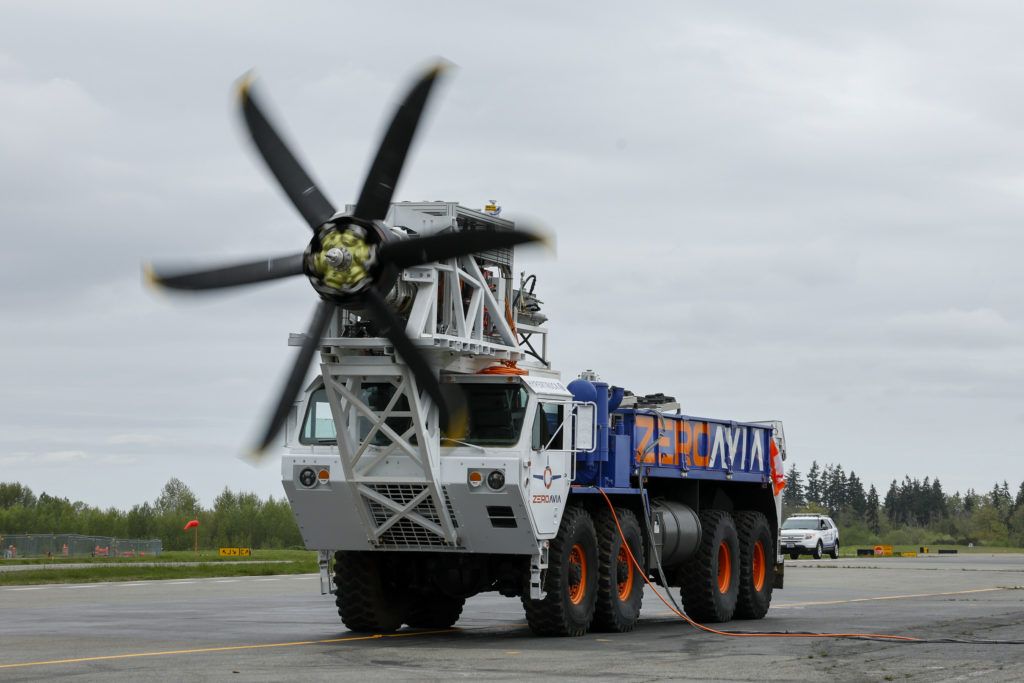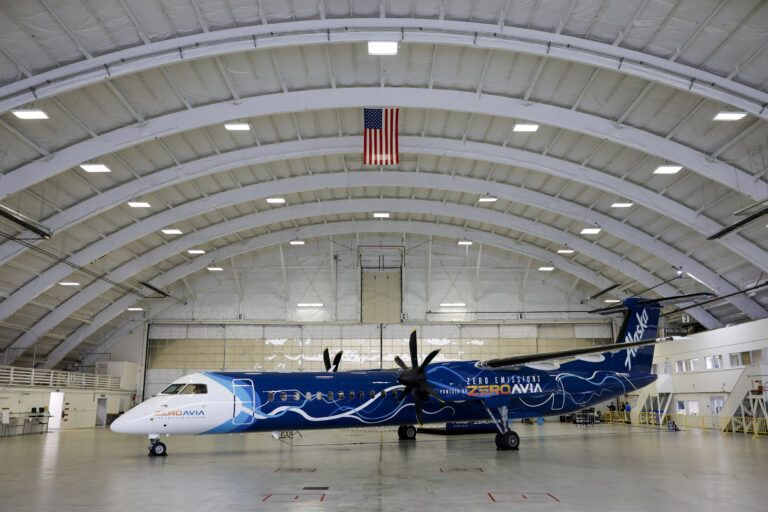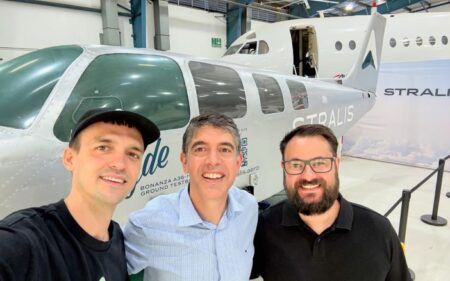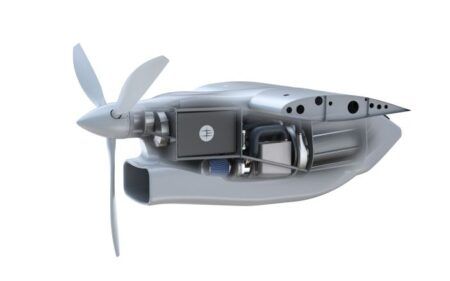Alaska Airlines has donated a Bombardier Q400 regional turboprop to ZeroAvia so that it can be retrofitted with a hydrogen-electric propulsion system and flight-tested next year.
When the powertrain is integrated and flown onboard the 76-seat Q400, an aircraft also known as the Dash 8-400, it will become the largest airplane yet to be powered by a hydrogen fuel cell.
A handover event this week held at ZeroAvia’s Paine Field R&D site in Washington State revealed that the aircraft, part of regional carrier Horizon Air’s retired fleet of Q400s, has been repainted with a special livery to highlight its new role.
The Q400 is a later-life version of the Dash 8 that Bombardier stopped making in 2009.
Val Miftakhov, founder and CEO of ZeroAvia said, “Demonstrating this size of aircraft in flight, powered entirely by novel propulsion, would have been unthinkable a few years ago.
“Launching this program puts us on track for a test flight next year and accelerates our progress toward the future of zero-emission flight for Alaska Airlines and for the world at large.”
Earlier this year ZeroAvia flew a 19-seat Dornier 228 retrofitted with its prototype 600kW hydrogen-electric engine, the ZA600 at Cotswolds Airport in the UK.
The company is also developing the ZA2000 hydrogen propulsion system for larger regional turboprop aircraft such as the Q400. The company aims for the ZA2000 to be capable of producing between 2,000 and 5,000 kilowatts of power to give a 500 mile (800km) range for such an aircraft.
Alaska Airlines CEO Ben Minicucci said, “Alaska Airlines has defined a five-part journey to achieve net zero carbon emissions long-term, but we can’t get there alone. New technologies are required to make that future possible, and we’re thrilled to partner with industry leader ZeroAvia to make new zero-emissions options a reality.”
ZeroAvia made a deal with Alaska Airlines to supply up to 50 retrofittable hydrogen-electric powertrains in October 2021, part of which included the airline making an investment in the startup.
ZeroAvia has also established a partnership with the original manufacturer of the Dash 8 family of aircraft De Havilland of Canada to enable exchange of data and expertise with the airframe.
HyperCore testing
At the event ZeroAvia also showed off a multi-megawatt modular electric motor system in a 1.8MW prototype configuration by running the propeller aboard its 15-ton ground-test rig.
The 1.8MW motor configuration demonstrated consists of two “HyperCore” motor modules, each a high-power, high-speed 900kW permanent magnet radial flux machine which operates at 20,000 rpm, matching typical turbine engine power turbine speeds and providing 15kW/kg motor power density.

According to ZeroAvia, HyperCore’s modular design enables the technology to address applications ranging from 900kW up to 5.4MW, meeting a number of regional turbo-prop and jet requirements.
The HyperCores have been successfully integrated with a stock Q400 engine gearbox and propeller, which the company says simplifies integration into the aircraft as a replacement for a stock turbine engine.
The ongoing testing program aims to enable greater understanding and measurement of system dynamics, calibration of physical and electrical models, and validation of thermal management systems.





